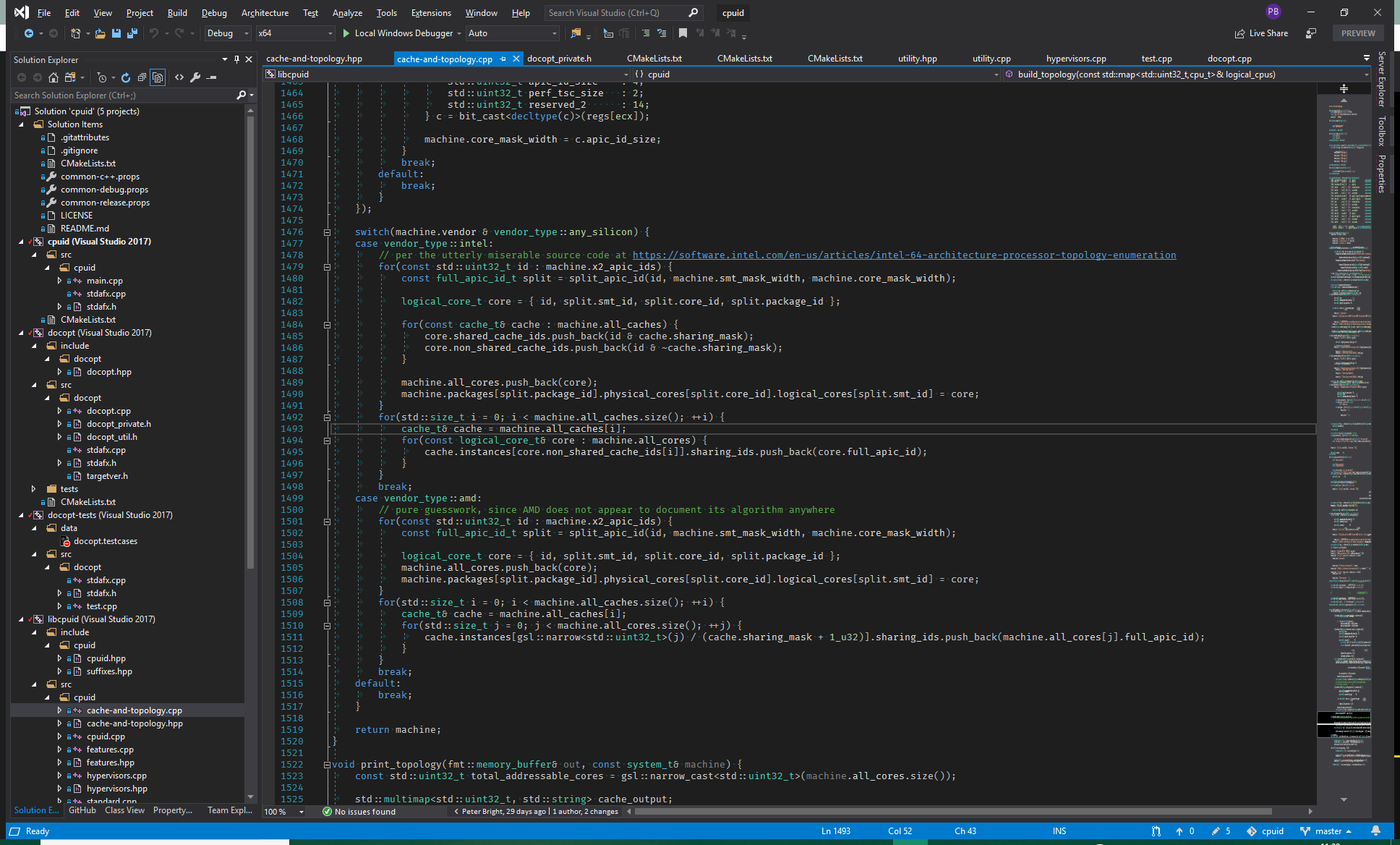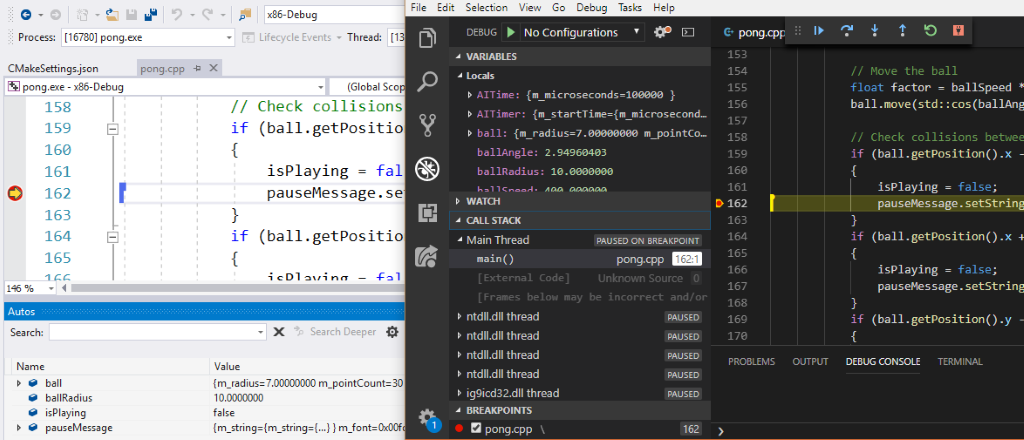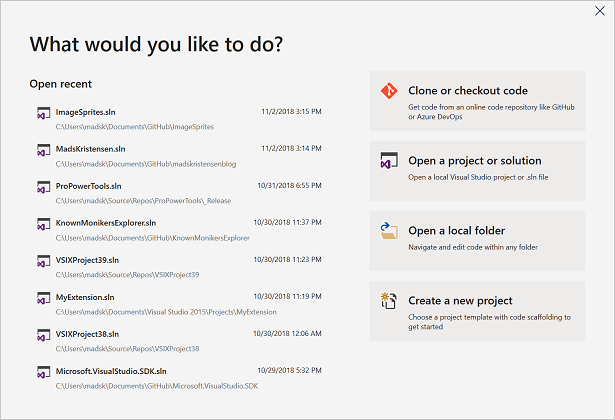Visual Studio 2019 released

Today, a new version of the IDE from Microsoft has become available: Visual Studio 2019 and its “cousin” Visual Studio 2019 for Mac have been released.
Visual Studio is in a slightly strange position, and developers can ask why such a release even exists. Visual Studio 2017 has received nine minor updates and countless patches since its release two years ago . Each of these releases brought new features and bugfixes , and using Visual Studio turned out to be akin to, for example, Google Chrome, where each new version brings a steady stream of incremental improvements.
')

Live Share mode, on the left, the code is open in Visual Studio 2019, on the right - in Visual Studio Code
And after all, this interactive incremental model Microsoft promotes (and uses) in services like Azure DevOps , and it can be compared with the continuous development of the monthly updated Office 365 and Visual Studio Code . When using this approach to development, someone might wonder why they even bother with “Visual Studio 2019”: let's just be “Visual Studio” and it will always be updated.
Why keep the old approach to releases? There are consumers who buy perpetual licenses, and the new major version makes it easy to make certain changes — for example, to stop supporting old platforms or to scale up the C ++ library. Visual Studio 2019 (finally) abandons Windows XP support for C ++ projects, so you will have to use the old Visual Studio 2017 compiler if you still want to target the long-obsolete operating system. Also, the new major version is the right moment for big interface changes, and first of all, when installing Visual Studio 2019, a new welcome screen , a new interface for creating projects, and a new header line, including the application menu and a revised search for features in the IDE, will be noticed .

Also, the new version brings things that were not in 2017. I am most attracted by the fact that the Live Share system reached the stage of general availability. This is a collaborative editing system that works in both Visual Studio and Visual Studio Code, allowing pairs of developers to code and debug together, while seeing the interface in front of them that matches their personal preferences. The original Live Share preview version, which appeared in November 2017, only supported JavaScript (along with its successful Microsoft version of TypeScript) and C #.
In response to user demand, C ++ and Python have been added to Live Share. So far, Python for Visual Studio is still new; Support for this scripting language was added to Visual Studio 2017 with one of the updates. Visual Studio 2019 extends this with various Python runtimes (making it easier to switch between interpreters and versions), a more functional debugger, and a smarter IntelliSense add-on.
C ++ developers get better optimization in the compiler, improved support for projects built by CMake, and partial support for the lifetime profile - a set of rules that allow the compiler to warn about unsafe use of pointers and iterators.
Now that GitHub is part of Microsoft, GitHub integration is gaining momentum in Visual Studio; in 2019, there is support for the githaboo pull-requests model for managing the integration of patches into the code base directly in the IDE. There is also support for the “stash” feature from git, which allows you to save a set of changes, to switch to another branch without having to commit these changes and without the risk of losing them.
And as with any new version of Visual Studio, there is the usual series of updates to compilers and language versions: a preview of the features of C # 8.0, new refactorings, and the like.
Visual Studio for Mac (based on the Xamarin IDE when Microsoft bought Xamarin ) was also updated today. Its first version, in fact, was the rebranding of the Xamarin Studio application (with the addition of the C # compiler and Microsoft .NET libraries) and had little to do with the “real” Visual Studio.
However, it seems that Microsoft is seriously trying to bring these products together in those aspects where it makes sense. Visual Studio for Mac 2019 has a preview of a new text editor based on the same engine as Visual Studio for Windows, with a native interface for macOS and features. This means that now both Visual Studio have similar features in things like IntelliSense, code extensions and quick-fixes. The new editor is not enabled by default, but you can enable it for C # and XAML, and after bringing them to a stable state, you plan to add more languages. The welcome screen now also looks very similar to the fellow from Windows:

Microsoft is bringing two Visual Studio together in other areas: the Unity debugger on Mac and Windows are now the same, and in the future, the update is going to partially bring Windows Xamarin Forms XAML on Mac.
Besides all this, there are improvements in performance and stability, as well as many improvements in accessibility.
In the case of both versions of Visual Studio at Microsoft, they emphasize the importance of user feedback in the development process. Both minor and major updates were based on feedback — for example, in cases with Python and Live Share, new features appeared as a direct response to user requests. The constant stream of minor releases allows Microsoft to provide new functionality to users much faster than it would have been with major updates, and this functionality can be modified and expanded in response to feedback. Compared to the old days, when you started up bugs on the Microsoft Connect website just to make them disappear, the current state of affairs is a refreshing improvement.
From translators: the Visual Studio theme is close to us, because in May we will see many of its Russian users at our DotNext conference. If you are interested in this release, it is quite possible that you are interested in something from the DotNext program .
Source: https://habr.com/ru/post/446534/
All Articles